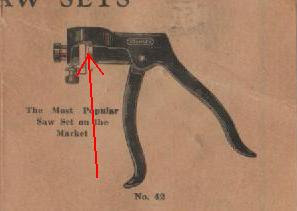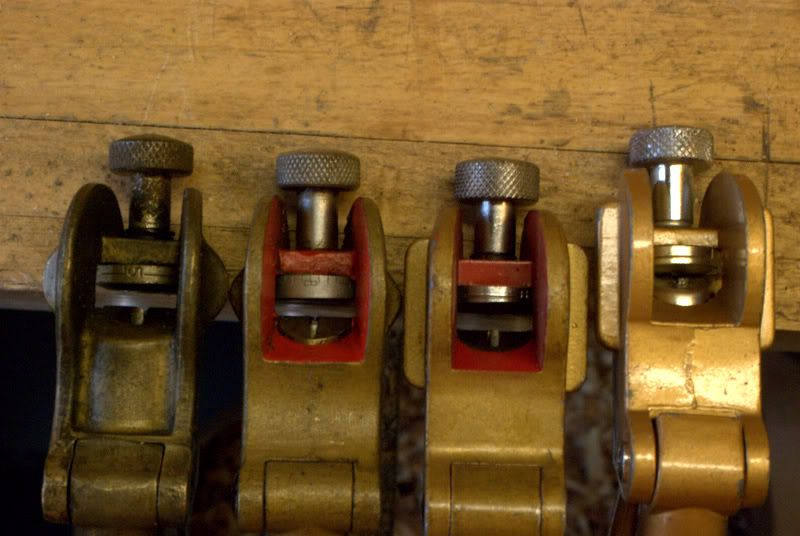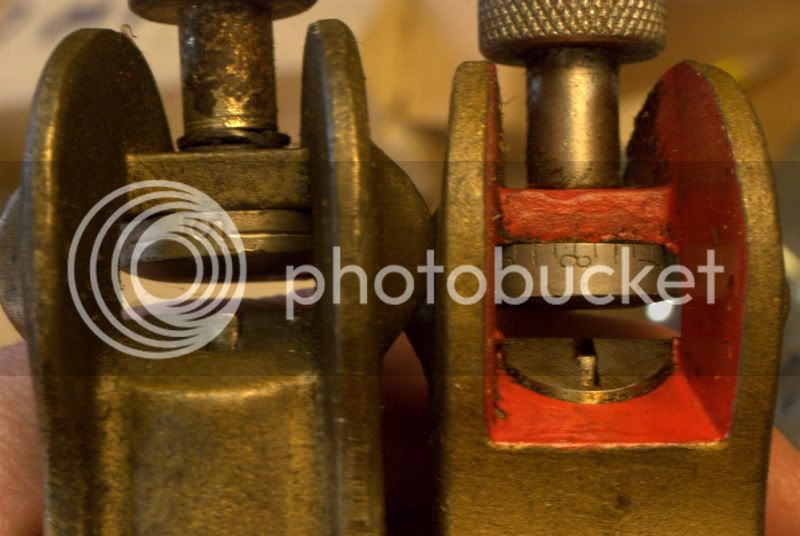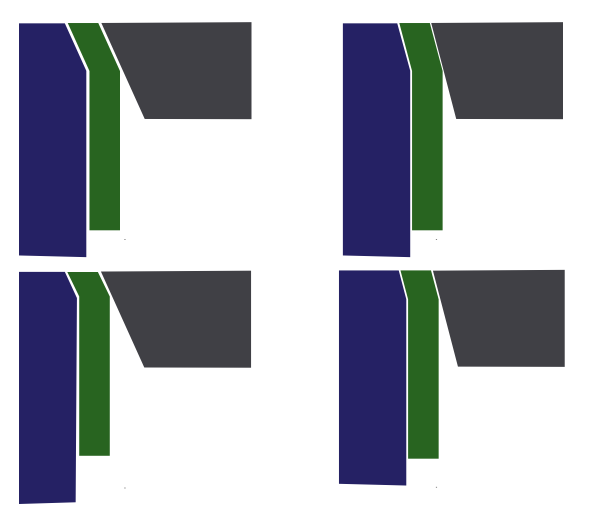xy mosian":1dcpr7y8 said:
Now I've done a bit of metal work, school stuff mostly, and I cannot think how this could be machined without some fairly complex machinery.
From an old post to OLDTOOLS:
paul womack wrote:
> So; has anyone out there tried non-uniform
> teeth in a saw?
Heh, heh. At the risk of replying to my own post,
I have (now).
Summary; it took a while to do, and the saw cuts well.
Longer version.
I spent 10 minutes filing off the old 14 TPI teeth,
and then filed a 1/8" camber onto the toothless edge.
Since this saw is to be used for tenons and dados,
I felt a "breasted" edge was desirable.
I then SiC'd and polished the blade - this is normally
difficult due to the teeth shredding up your
abrasive, so I made the most of my opportunity
The layout was done by using a computer to print
out the graduated teeth pattern on paper,
and simple gluing the paper on to the saw.
Initial filing is tricky - you need to make a "notch"
somewhere in the gullet of each tooth. Once you have
a prelimnary gullet, it's quite easy to guide the
triangular file left/right rather accurately
as you work downwards.
Once I'd more or less created the teeth, I removed the
paper, and did a final shaping and evening up pass.
All the work to this point was done from one side of the
saw. I find this *MUCH* easier, especially when filing BOTH
sides of a large tooth to get it's size and position correct.
I then applied moderate set with a modified Eclipse
#77 saw set.
SIDEBAR - the Eclipse #77 saw set
Eclipse #77 saw sets normally apply too much set -
the marked TPI settings around the anvil are WAY off.
Worse, you can't just use the setting for smaller teeth,
since the angle of the set is more or less constant (at around
20 degrees). If you use (e.g.) the 10 TPI setting on 6 TPI
teeth, you just bend the top part of the tooth, but still
at 20 degrees. This does give you less total set,
but in the wrong way.
I therefore removed and reground the anvil disc from
one of my #77's (I'm not a c*ll*t*r, no sir).
I ground a good amount of material from the thickness
of the disc (thus reducing the amount
of set) and then bolted the disc to the end
of a plywood scrap, and clamped the scrap in my
giant honing jig. I could then set the jig to my desired
angle (around 13 degrees) and carefully grind the disc.
Rotating the disc gradually on the bolt allowed me to make a
varying size, contsant angle bevel around the circumference of the disc.
Doing this the "quick" way by carefully eyeball the spiral
took very careful judgement and several passes.
It would probably have been quicker to measure/mark some depth stations,
grind these accurately and then interpolate.
END
(later I realised that that end of the plunger needed to be at the same angle as the face of the anvil, and ground the plunger's end face too)
BugBear






































